
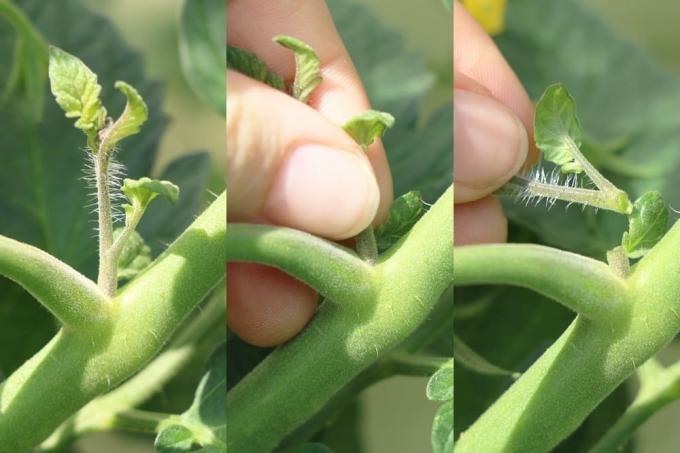
Table of contents
- sorts
- reasons for skipping
- time
- recognize miserliness
- Instructions
- propagation
- Is pinching necessary?
Pinching tomato plants is an easy way to get more and bigger fruit. However, it also has other advantages. Nevertheless, many hobby gardeners shy away from it and fear removing the wrong shoots or causing damage to the plants. With our instructions, these dangers do not exist.
sorts
Not all tomato plants need pinching. It is unnecessary, for example, for vine and bush tomatoes. These plants remain compact anyway and are therefore also suitable for cultivation in a bucket. In the trade, they are often listed under the following designations:
- cocktail tomatoes
- party tomatoes
- bush tomatoes
- date tomatoes
- mini tomatoes
- cherry tomatoes
These are varieties with small fruits, although the plants usually remain small.
reasons for skipping
Increased yield is often cited as the main reason for pinching tomato plants. If stinging shoots are removed, the power of the plant is concentrated in the main shoot and strong, fruit-bearing side shoots as well as the formation of larger fruits. Even stinging shoots can bear buds and fruit. However, the fruits often remain very small and do not always ripen.
However, as mentioned, pinching tomato plants has other advantages. These include:
Reduced risk of damage
Due to the fruits, stinging shoots can become very heavy. This makes the tomato plants more susceptible to damage from wind and rain. Parts of the growth can break off and even the main shoot can buckle. The pinching makes the plant lighter, straighter and more stable.
Easier maintenance and control
Stingy shoots create a very dense foliage. This makes tying up the plant just as difficult as checking for diseases or parasites. The more airy growth after pinching facilitates these measures.
Lower risk of illness
The densely growing and standing leaves caused by stinging shoots reduce ventilation. Leaves stay moist longer, making it easier for diseases and parasites to spread on and between them. Pinching out not only makes controls easier, it also reduces the risk of infestation with pathogens and pests.
Faster and easier harvest
After pinching, the fruits are visible more quickly and are easier to remove - due to the stronger incidence of light, they can also ripen in a shorter time.
time
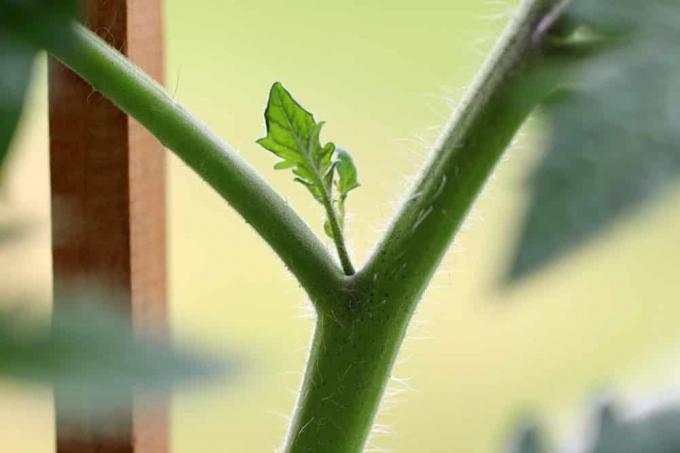
The pinching of the tomato plants can start very early. As soon as the plants are placed in the bed, the stinging shoots can be removed for the first time. It is even advisable to carry out the measure as early as possible. Because this results in the following advantages:
- smaller wounds and therefore less risk of invading germs
- Plant wastes less energy in growing buds
- Stability is maintained more consistently
- Measure can be carried out more quickly and easily
However, it is not enough to do the tomato planting only once. The plant will always train new stingy shoots. Therefore, it should be checked once a week for new shoots and these should be removed immediately.
It is therefore important to start and continue the stinging early on - but also to choose the right time for it. A warm, dry day is ideal. Because removing the stinging shoots causes small wounds or cut surfaces on the plant. As long as these are still damp and have not closed, germs can penetrate them. In dry weather, open wounds close faster and the risk of invading pathogens is reduced.
Tip:
If pinching is carried out regularly, it is very easy to recognize the stinging shoots and more energy is channeled into the formation of buds and fruits.
recognize miserliness
The biggest concern of many hobby gardeners is to remove the wrong shoots when pinching the tomato plant - because they cannot correctly recognize the pinching shoots and distinguish them from others. However, this concern is unfounded, because even inexperienced gardeners will be able to easily recognize stinging shoots and distinguish them from the main and side shoots.
Branching off from the main shoot, which is also known as the trunk, there are side shoots. These bear buds and fruit. The connection between the trunk and the side shoots, i.e. the areas where the side shoots emerge from the main shoot, are called leaf axils. Side shoots grow exclusively in these leaf axils and not directly from the main shoot or a side shoot. If this is taken into account, there is no risk of accidentally removing a side shoot.
Instructions
The following tools are required to pinch out the tomato plants and then secure them:
- Thumbnail or small scissors
- Plant stick or trellis
- Wire, twine or plant clips
Pruning tomato plants is easy when the following steps are taken into account:
1. Check
The leaf axils of the tomato plant are checked for stinging shoots from the top to the bottom.
2. max out
If there is a stinging shoot between the main shoot and a side shoot, it is clipped off with a thumbnail directly at the connection to the plant or removed with small scissors. Larger stingy shoots have a kind of predetermined breaking point. If they are bent to the side with slight pressure, they simply break off. The main shoot should be held firmly to stabilize it.
3. To back up
Because the tomato plant puts more energy into growing the stem and side shoots after pinching can conduct, it often quickly gains height, buds and buds after removing the stinging shoots fruits. To ensure that this additional height and weight does not cause individual parts to break off, causing the plant to grow sideways or tilt, it must be secured accordingly. For this purpose, a stabilizing plant stake or a trellis should be used - ideally already when planting - and the plant attached to it. Wire, twine or plant clips are ideal for fixing. Additional fixations should be set after each tightening. A distance of ten centimeters is recommended.

Although pinching the tomato plants basically consists only of identifying and removing the stinging shoots, the subsequent securing of the plants should not be neglected. Otherwise, wind and rain could still damage the tomato plants.
Tip:
If scissors are used, they should be thoroughly cleaned or disinfected before and after use. Otherwise, germs could be transferred to the wounds of the plant via the blades and increase the risk of disease. If the thumbnail is used, the same applies, of course.
propagation
The shoots removed during pinching can be added to the compost or used to ward off pests while they dry. However, it is also possible to grow new tomato plants from them. To do this, shoots from a length of about ten centimeters are simply stuck directly into the ground. Shorter shoots should first be placed in a glass with little water for a few days so that they can form roots. If the shoots are used early as cuttings, the resulting tomato plants can even bear fruit in the same year.
Is pinching necessary?
Especially among hobby gardeners, it is discussed again and again whether it really makes sense to use the maximum. Some swear by it because of the benefits mentioned. Others have reliable yields even without this measure. As always, the proof of the pudding is in the eating.
Tip:
As a test, pinch out a tomato plant and leave it on a stinging shoot. This shows very directly whether the selected variety benefits from the removal of the stinging shoots.
 garden editorial
garden editorial I write about everything that interests me in my garden.
Learn more about tomatoes
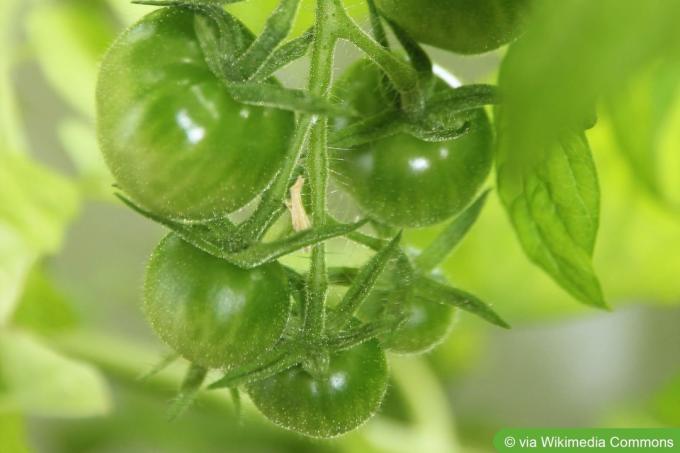
Mexican Honey Tomato: Taste & Cultivation
With the "Mexican honey tomato", hobby gardeners can bring a particularly sweet tomato variety into their garden. Due to its low acidity, it is one of the most popular sweet tomatoes and at the same time very easy to care for.
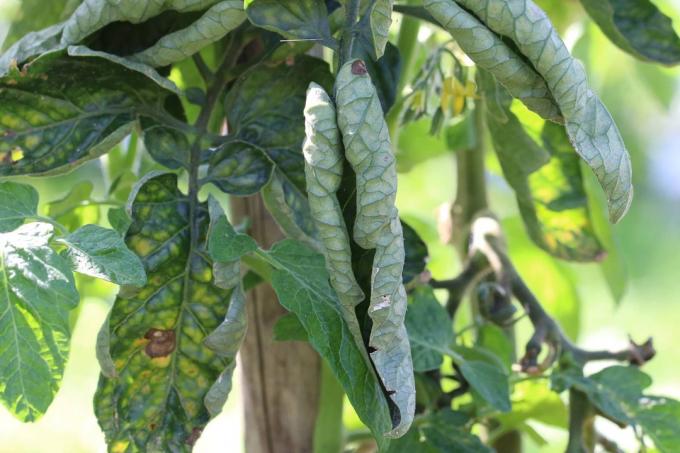
Tomato leaves curl: what to do?
There are many causes of curled leaves on tomato plants. Some are harmless, others can ruin crops. So waiting is not an option. Like a detective, you must search for clues. And then, if feasible, tailor-made countermeasures. Here's what to do when tomato leaves curl.
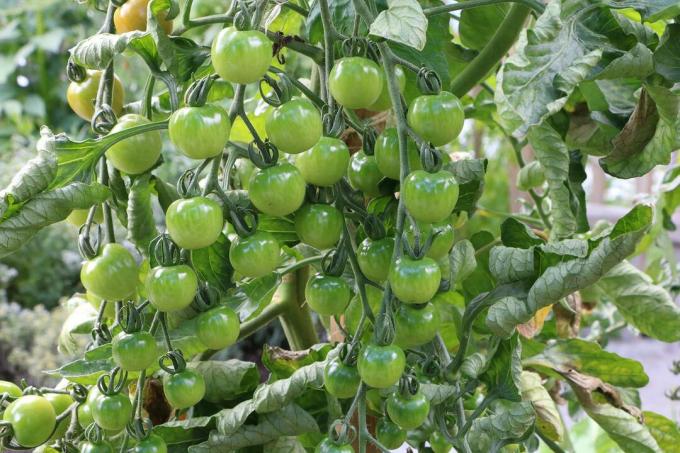
Fertilize tomatoes: how often, when and with what?
Tomatoes need a consistently high amount of nutrients for the development of flowers and fruits. In addition to choosing the right fertilizer, the amount and frequency also play an important role. All essential information for an optimal dosage can be found here.
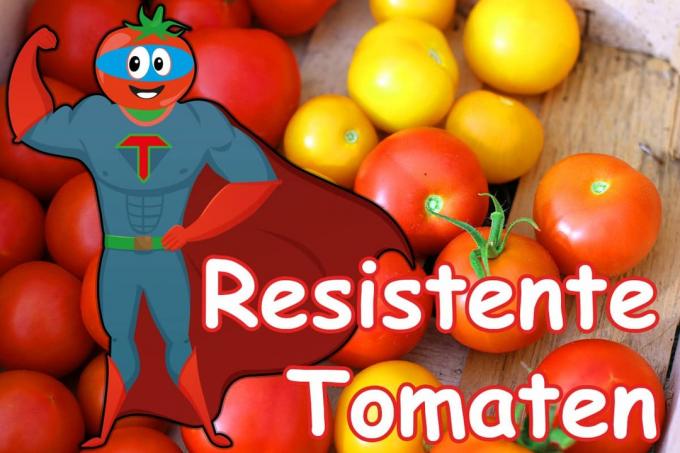
11 resistant tomato varieties defy rain and disease
Tomatoes are considered to be relatively easy to care for, but rain and numerous diseases can bother them. Fortunately, there are numerous tomato varieties that are resistant to many dreaded tomato diseases. We present the most popular specimens in this article.
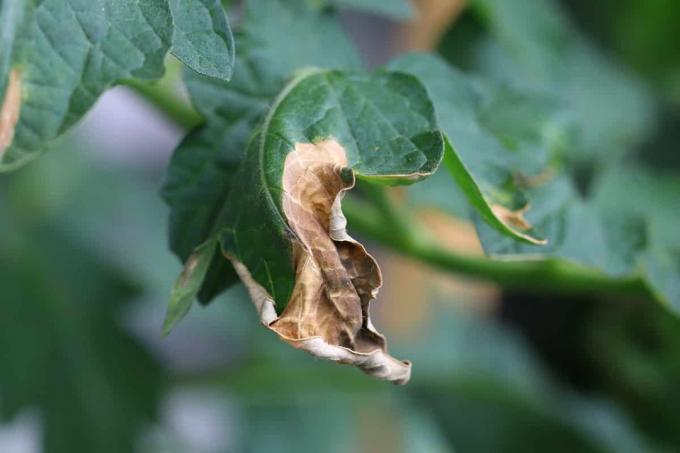
Control late blight and late blight in tomatoes
If pathogens of brown blight and late blight have settled on tomato plants, there is little hope of successful control. Home remedies and mechanical interventions only make sense in the early stages. It is all the more important that you prevent infections in a targeted manner through care measures.

How healthy are tomatoes? Information on calories, nutritional values & Co.
Snack healthy? The tomato makes it possible! Find out here why the red fruit should end up on the plate more often!
